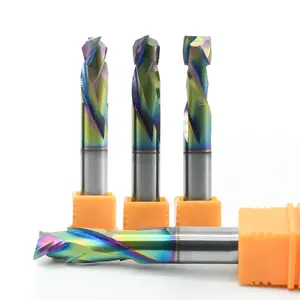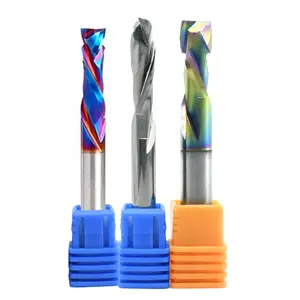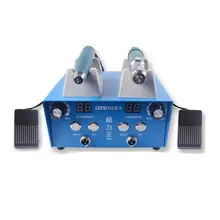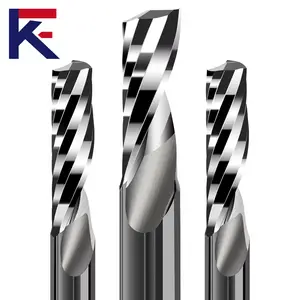What are Milling Cutters
Milling cutters are essential tools in the manufacturing and engineering industries for shaping and cutting materials. These precision tools are used to remove material from a workpiece by moving it against a rotating cutter with multiple cutting edges. Each milling cutter is designed to perform a specific type of cut, and they come in various shapes and sizes to accommodate a wide range of milling operations.
The primary function of milling cutters is to create flat or curved surfaces on a piece of metal, wood, or other materials. They can also be used to produce slots, holes, and other complex features with high accuracy. The effectiveness of a milling cutter is determined by its design, the speed at which it rotates, the material it is made of, and the type of coating that may be applied to enhance performance.
Professionals such as machinists, toolmakers, and manufacturing engineers rely on milling cutters to fabricate precise components for machines, gadgets, and structures. The cutters are mounted on milling machines that provide the necessary power and movement control. As the machine guides the cutter through the material, the teeth slice through the workpiece to remove excess material, shaping it according to specifications.
Understanding how milling cutters operate involves a grasp of the principles behind speed (RPM), feed rate, depth of cut, and the direction of rotation. The choice between a climb milling operation and conventional milling determines how the cutter engages with the material and influences factors like finish quality and tool life.
Types of Milling Cutter
The diversity of milling operations necessitates a range of milling cutter types:
End Mills: These are one of the most common types of milling cutters used today. They have cutting teeth on the end as well as on the sides and are used primarily for profile milling, facing, and plunging operations.
Slot Drills: Slot drills are used for slot cutting such as keyways and slots where only a short depth is required. They are characterized by their two-fluted design which provides better chip clearance.
Face Mills: With multiple teeth around the circumference and sometimes on the face as well, face mills are used primarily in face milling operations to produce flat surfaces with high finish quality.
Ball Nose Cutters: Featuring a hemispherical end, ball nose cutters are used for creating contoured surfaces and complex shapes like molds and dies.
Slab Mills: These are used for heavy cutting operations and are characterized by their large diameter and multiple teeth, ideal for machining large broad surfaces quickly.
Thread Mills: Designed to produce threads on a workpiece, thread mills have a tapered end that gradually forms full thread depth as it moves into or across the workpiece.
Fly Cutters: Fly cutters consist of one or more single-point cutting tools mounted at a distance on a rotating body; they provide an economical way to achieve large surface planing with a smooth finish.
Each type has its own specific uses in various industries where precise material cutting is crucial. For instance, end mills are versatile for multiple tasks in metalworking shops while ball nose cutters are indispensable in mold-making industries.
How to choose Milling Cutter
Selecting the right milling cutter for your business involves considering several factors:
Firstly, identify the material you will be machining. Different materials require different types of milling cutters; for example, tungsten carbide cutters could be ideal for harder materials whereas high-speed steel (HSS) may suffice for softer materials. The material influences not only cutter choice but also decisions regarding coatings which can increase tool longevity.
Secondly, consider cutter geometry such as flute numbers which affect finish quality and chip removal efficiency. More flutes typically result in a finer finish but reduced chip clearance space, so balance these aspects based on your operation's priorities.
Thirdly, evaluate the compatibility with your machinery since not all cutters fit all machines. The size of your mill's spindle taper will determine what shank sizes you can accommodate.
Lastly, think about volume and precision requirements. For high-volume production runs with strict tolerances, investing in more specialized or custom-designed cutters might be necessary.
By carefully assessing these points based on your industry's needs—whether you're working in manufacturing plants or machinery repair shops—you can choose milling cutters that will deliver performance and reliability.
Best Milling Cutter on Alibaba.com
For businesses seeking reliable suppliers of milling cutters, Alibaba.com stands out as an expansive marketplace offering an extensive selection from vendors around the world. With an impressive array of materials including steel variants like tungsten carbide and solid carbide as well as coatings from TiAlN to nano-composite options, Alibaba.com caters to businesses needing diverse machining capabilities for various applications.
Alibaba.com simplifies international trade by offering services like Trade Assurance which ensures payment protection until order delivery is confirmed. This assurance supports trust between buyers and suppliers in an online environment. Additionally, with tools allowing easy communication in local languages and mobile-friendly browsing features, purchasing decisions become more convenient for buyers regardless of their location or time zone.
The platform’s commitment to aiding small to medium-sized businesses in expanding their reach globally aligns with today's demand for versatile trade solutions. Without committing to specific guarantees about product quality or supplier reliability—which is outside Alibaba.com's control—the platform facilitates connections between businesses aiming to procure industrial-grade milling cutters that can help them maintain competitive production standards while managing operational costs effectively.
Common FAQs for Milling Cutters
What materials are milling cutters made of?
Milling cutters are made from various materials, including high-speed steel (HSS), carbide, cobalt, and tungsten alloys. The material choice depends on the intended use and the type of material being machined.
How do I determine the right coating for my milling cutter?
The choice of coating for a milling cutter depends on the material being cut and the desired outcome. Common coatings include TiAlN, AlTiN, TiCN, and uncoated options. Coatings can extend tool life and enhance performance in specific cutting conditions.
What is the importance of the number of flutes on a milling cutter?
The number of flutes on a milling cutter affects its cutting performance and chip removal efficiency. More flutes typically result in a finer finish but can reduce chip clearance, while fewer flutes allow for larger chip loads and faster cutting speeds.
How do I choose between an end mill and a face mill?
End mills are versatile for detailed work like drilling and plunge cutting, while face mills are better suited for creating large, flat surfaces with high precision. Your choice should be guided by the specific needs of your project.
Can milling cutters be used on materials other than metals?
Yes, milling cutters can be used on a variety of materials including plastics, woods, and composites. The type of cutter and its specifications need to be compatible with the material's properties.
What does 'up cut' and 'down cut' mean in milling operations?
'Up cut' and 'down cut' refer to the direction of chip evacuation relative to the cutter's rotation. In up cutting, chips are ejected upwards, while in down cutting they are pushed downwards. The choice affects surface finish and tool life.
How do I know if I need a custom milling cutter?
Custom milling cutters may be required when standard sizes or designs do not meet the specific requirements of your operation or workpiece. Customization can involve specific dimensions, flute counts, or specialized profiles.
What is a carbide insert in milling operations?
A carbide insert is a replaceable and indexable bit used in milling cutters. They are made from carbide, which is harder than HSS and retains its edge at high temperatures for longer tool life.
Why is tool balance important in milling?
Tool balance is crucial to prevent vibration or chatter during the milling process, which can affect surface finish and dimensional accuracy. Balanced tools also contribute to longer tool life and better machine health.
How often should I replace my milling cutter?
The frequency of replacing a milling cutter depends on factors such as the cutter's material, coating, usage intensity, and the type of material being machined. Regular inspection for wear and damage is necessary to determine replacement timing.
Are there different types of end mills for specific applications?
Yes, there are various types of end mills designed for specific applications such as roughing end mills for heavy material removal, finishing end mills for detailed work with a better surface finish, and ball nose end mills for 3D contouring.
Can I use a single milling cutter for different materials?
Using a single milling cutter for different materials is not recommended as it may not be optimized for all materials. Instead, select the appropriate cutter based on each material's properties to ensure efficiency and precision.
What safety precautions should be taken when using milling cutters?
Safety precautions include wearing protective gear like gloves and safety glasses, ensuring proper installation of the cutter in the machine spindle, checking that all machine guards are in place, and always following manufacturer guidelines.
How does the choice of spindle speed affect my milling operation?
Spindle speed affects cutting efficiency and tool life; too slow speeds can lead to poor productivity while too fast speeds can cause excessive heat buildup leading to premature tool wear or workpiece damage. It must be optimized based on material hardness and cutter specifications.
What's the difference between climb milling and conventional milling?
Climb milling involves feeding the workpiece in the same direction as the cutter's rotation which can produce a better finish but may cause machine backlash issues. Conventional milling feeds against the direction of rotation, providing more stability but potentially rougher finishes.












































 浙公网安备 33010002000092号
浙公网安备 33010002000092号 浙B2-20120091-4
浙B2-20120091-4